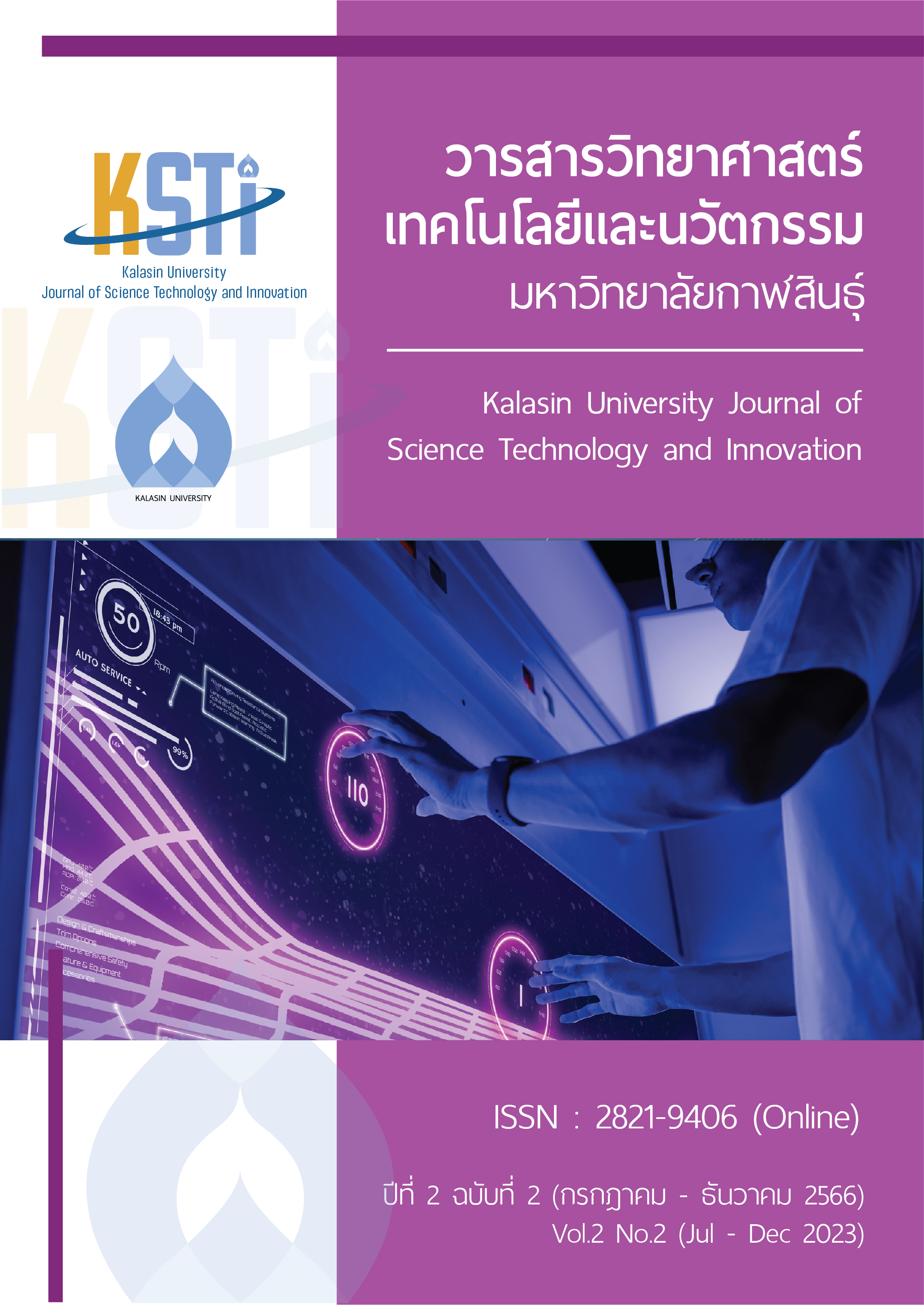Development of a prototype watering vegetables device via smartphone
Main Article Content
Abstract
Due to the increasing cost of living, people with low to middle incomes need to reduce their household expenses. One of the main problems is the cost of household consumption. If this cost can be reduced, it will alleviate some of the expenses. Growing vegetables for household consumption is one possible solution. However, vegetable cultivation requires care, such as watering. Therefore, the objectives of this research are: 1) to study and analyze the components of a home-grown vegetable irrigation system through a smartphone application. 2) To design and implement a home-grown vegetable irrigation system through a smartphone application. This system will be done by applying Internet of Things (IoT) technology to adjust the appropriate moisture level for the growth of each type of home-grown vegetable. A soil moisture sensor will be used to send data to a microcontroller which will control the moisture level through a smartphone application using the Blynk Platform. This platform can be used with various IoT devices such as Arduino, Raspberry Pi, ESP8266, ESP32, Particle, and others. The appropriate moisture level for each type of home-grown vegetable will be set. If the measured moisture level is lower than the set standard, the system will immediately activate the water pump for ease of control and use. The system was tested with three types of vegetables, coriander, basil, and bird's eye chili, ten times each. The results showed that the system was functional with minor errors due to internet connectivity issues.
Downloads
Article Details

This work is licensed under a Creative Commons Attribution-NonCommercial-NoDerivatives 4.0 International License.
The owner (Research and Development Institute, Kalasin University), the authors agree that any copies of the article or any part thereof distributed or posted by them in print or electronic format as permitted will include the notice of copyright as stipulated in the journal and a full citation to the final published version of the contribution in the journal as published by Research and Development Institute, Kalasin University.
References
Onpreya C. ปลูกผักสวนครัวกินเองได้ในคอนโดพื้นที่จำกัด. [internet]. 2564 [สืบค้นวันที่ 25 ตุลาคม 2564]. จาก: https://thinkofliving.com/ไอเดียตกแต่งปลูกผักสวนครัวกินเองได้ในคอนโดพื้นที่จำกัด-705363/
factomart. หลักการทำงานของ Humidity Sensor. [internet]. 2561 [สืบค้นวันที่ 25 ตุลาคม 2564]. จาก: https://mall.factomart.com/principle-of-humidity-sensor/
ณัฐพล คำแหวน, ธนพนธ์ วงค์จักร, และอนุสรณ์ ยอดใจเพ็ชร. ระบบ Internet of Things สำหรับการบริหารจัดการน้ำระยะไกล. วารสารวิจัยเทคโนโลยีนวัตกรรม. 2561; 2(2): 15-23.
อนุวัฒน์ โคตรพรม และปภัสชล เมฆเสน. สมาร์ทการ์เด้นระบบรดน้ำอัตโนมัติด้วยพลังงานแสงอาทิตย์. (วิทยานิพนธ์ปริญญาวิทยาศาสตรบัณฑิต). ภาควิชาวิทยาการคอมพิวเตอร์, คณะวิทยาศาสตร์. มหาสารคาม; มหาวิทยาลัยมหาสารคาม; 2564.
สุปรียา มะโนมั่น และไพสิฐ พูลเพิ่ม. เครื่องรดน้ำต้นไม้อัตโนมัติ. (วิศวกรรมศาสตรบัณฑิต). สาขาวิชาวิศวกรรมโทรคมนาคม, สำนักวิชาวิศวกรรมศาสตร์. นครราชสีมา; มหาวิทยาลัยเทคโนโลยีสุรนารี; 2553.
นราธิป ทองปาน และธนาพัฒน์ เที่ยงภักดิ์. ระบบรดน้ำอัตโนมัติผ่านเครือข่ายเซ็นเซอร์ไร้สาย. วารสารวิชาการการจัดการเทคโนโลยีสารสนเทศและนวัตกรรม. 2561; 3(1): 35-43.
นิมิตร อมฤทธิ์วาจา, รุ่งโรจน์ อุตมาตร และสุริยา มณีโสภา. เครื่องโปรแกรมเวลาสำหรับการรดน้ำต้นไม้. วารสารวิจัยและนวัตกรรม สถาบันการอาชีวศึกษากรุงเทพมหานคร. 2561; 1(1): 76-82.
James Fuller. FC-28 Soil Moisture Sensor Module. [Internet]. 2022. [updated 2022; cited 2023 April 18]. Available from: https://datasheethub.com/fc-28-soil-moisture-sensor-module/
เจ้าของร้าน. NodeMCU ESP8266. [internet]. 2560 [สืบค้นวันที่ 25 ตุลาคม 2564]. จาก: https://www.allnewstep.com/article/30/nodemcu-esp8266-esp8285-arduino-1-esp8266-คือ
IOT.Code Mobie. 2-Channel 5V Relay Module. [internet]. 2559 [สืบค้นวันที่ 24 ตุลาคม 2564]. จาก: http://www.iot.codemobiles.com/product/14/2-channel-5v-relay-module
บริษัท เอ็ม ดี ชิสเต็ม คอนโทรล แอนด์ เซอร์วิส จำกัด. ปัญหาความชื้นภายในโรงเรือนปลูกพืช. [internet]. 2564 [สืบค้นวันที่ 25 ตุลาคม 2564]. จาก: https://dehum-mdthai.com


